On May 26, 2025, at 11:20, the Institute of Culture and Arts and the Department of Digital Art held a roundtable “Angelina Hafinets’s innovative artistic and figurative system: modernization of the traditional Transcarpathian school of painting through the prism of color”, following the results of a lecture-interview with Angelina Hafinets and Olesia Rybchenko at the National Museum of Taras Shevchenko.
Organizers of the meeting: Olesia Rybchenko and Anastasiia Avula PhDs, associate professors of the Department of Digital Art.
On May 26, 2025, at 11:20, the Institute of Culture and Arts and the Department of Digital Art held a roundtable discussion “Angelina Hafinets’s Innovative Artistic and Figurative System: Modernization of the Traditional Transcarpathian School of Painting Through the Prism of Color.” This event followed a lecture-interview with Angelina Hafinets and Olesia Rybchenko at the National Museum of Taras Shevchenko.
The organizers of the meeting were Olesia Rybchenko, PhD, Associate Professor at the Department of Digital Art and Anastasiia Avula, PhD, Associate Professor at the Department of Digital Art.



On May 21, 2025, students of the “Digital Art” program from the BCM-23 and BCM-24 groups attended a lecture-interview at the National Taras Shevchenko Museum. They had the opportunity to meet the renowned artist Angelina Hafynets, engage in discussion, and ask questions. The topic of contemporary Ukrainian art is especially relevant today, as it highlights important cultural and social issues.


The exhibition project features 30 paintings by the artist. “The works are created in a style that blends classical still life with abstract painting. A refined sense of color and a carefully chosen palette, combined with simplified yet powerful structural compositions – bordering on the constructivism of the last century – give each painting a unique and defining quality: a sense and vision of space”, said Yurii Komelkov, ideologist and initiator of the Avant-Garde Museum.
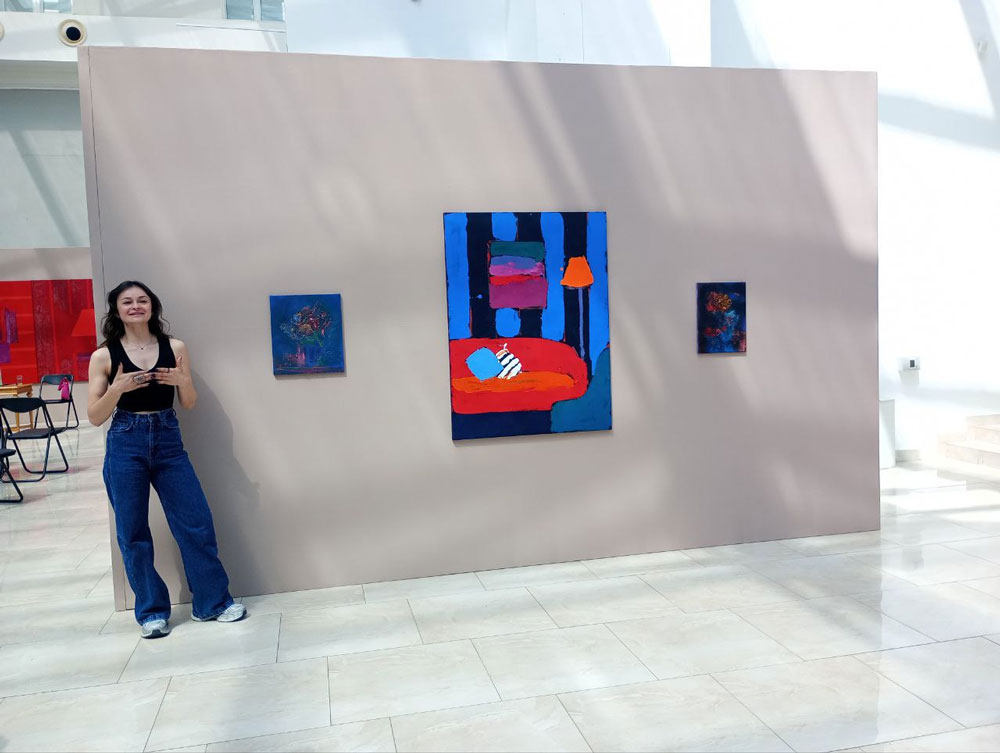
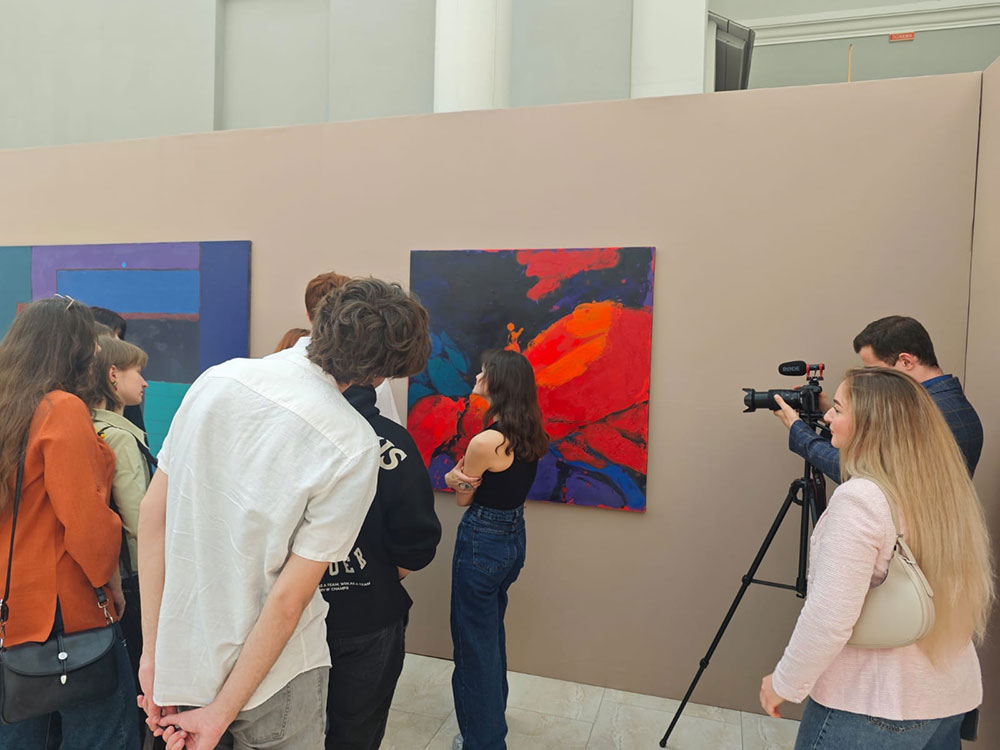
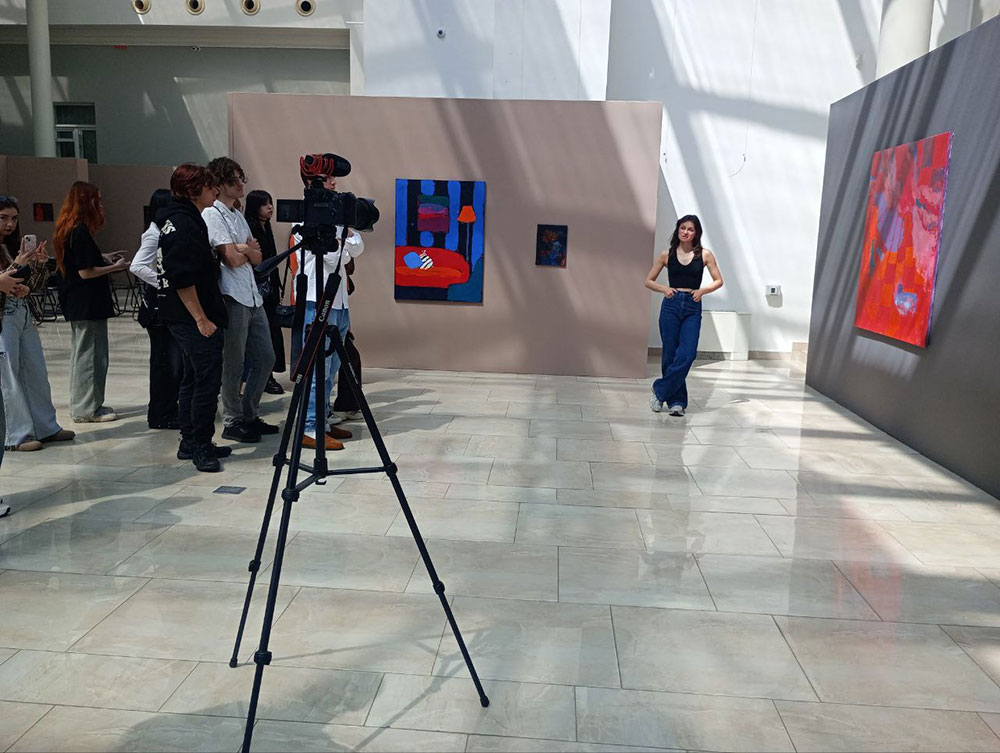
“In the modern Transcarpathian School of Painting, Hafynets is the first to approach still life through a new coloristic-planar, artistic-figurative system, where color itself becomes material – strong, dense, and formative – creating a perfect composition and, at a deeper level, constructing spatial layers. The professional academic structure on canvas is organized through the prism of color, through its inner logic and construction. In her works, the artist demonstrates continuity with the traditions established by her predecessors, yet firmly places them in the context of the present, giving rise to new forms”,says Volodymyr Petrashyk, PhD in Art History, Associate Professor, Editor- in-Chief of “Fine Arts” magazine, and a serviceman in the Armed Forces of Ukraine.
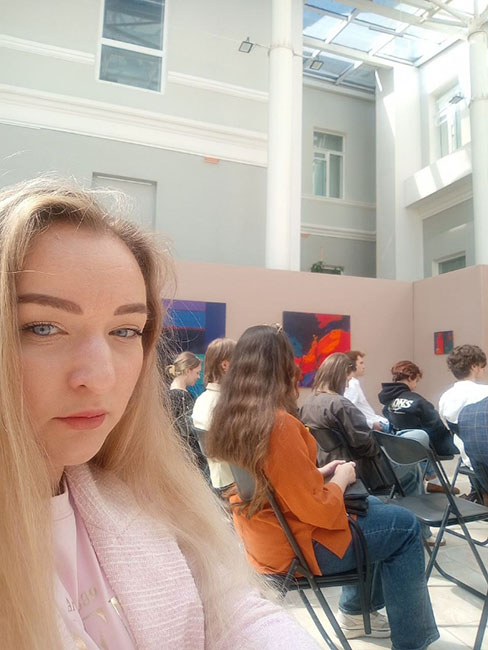
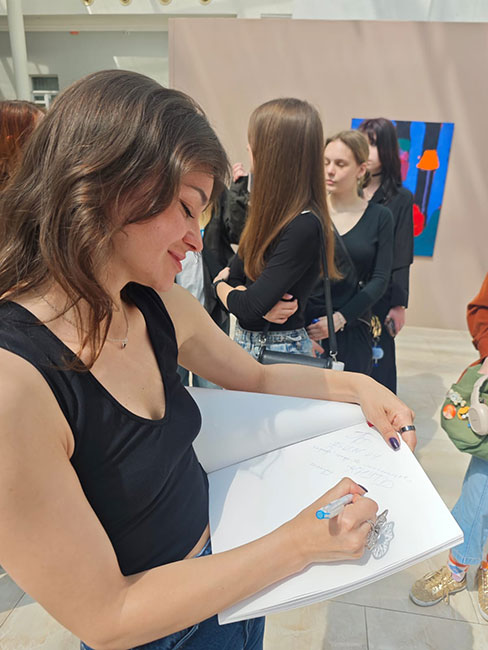
During the interview with Olesia Rybchenko and Angelina Hafynets, the topic of the “Picturesque Reserve” was revealed, the priority in the research topics of which was color, and artistic searches were based on the experience of abstractionism and Ukrainian Baroque. “The Picturesque Reserve” was an influential Ukrainian artistic association that existed from 1991 to 1995 and became an important part of the New Ukrainian Wave. The group was formed on the basis of plein airs in Sedniv in the late 1980s, and its ideologist and founder was Tiberiy Silvashi, and the group also included artists Marko Heiko, Anatoliy Kryvolap, Mykola Kryvenko, Oleksandr Zhyvotkov, Oleksandr Babak and association also included art critic Eduard Dymshyts.
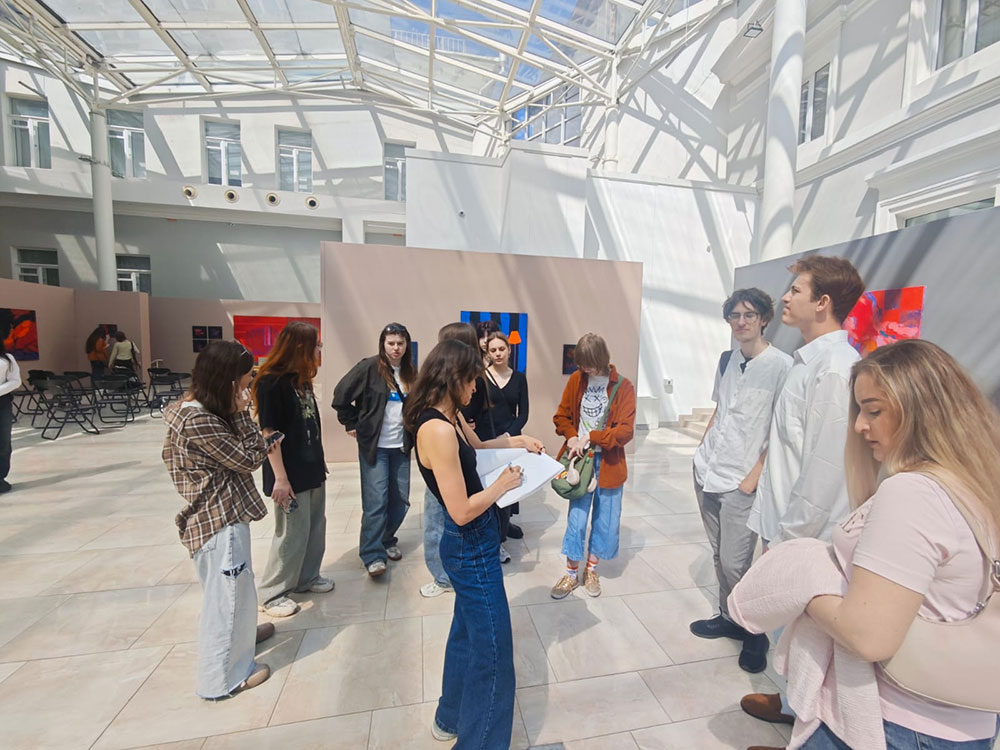

The Sedniv seminars and plein airs were the impetus for the creation of squats in Kyiv, the most prominent of which was the Paris Commune squat, whose members, Holosiy, Hnylytskyi, Savadov, and others, were guided by the ideas of Italian transvanguardism and postmodern eclecticism. started from the ideas of the Italian transavant-garde and postmodern eclecticism, went through monumentality and figuration in their research, unlike the “Painting Reserve”, which sought to completely move away from the plot on the canvas and move into the dimension of “pure painting”.



KNUTD students, deeply engaged with the historical aspects of Ukrainian art, had the opportunity to ask the artist a number of questions, and the dialogue turned out to be surprisingly rich and cohesive, as the event was intended to popularize and educate students.
That is why events held in museums, galleries, and other cultural institutions – as well as at the Kyiv National University of Technologies and Design – will always remain a vital part of educating and shaping young people. They inspire students to explore the cultural and artistic life of Ukraine more deeply and meaningfully.
27.05.2025